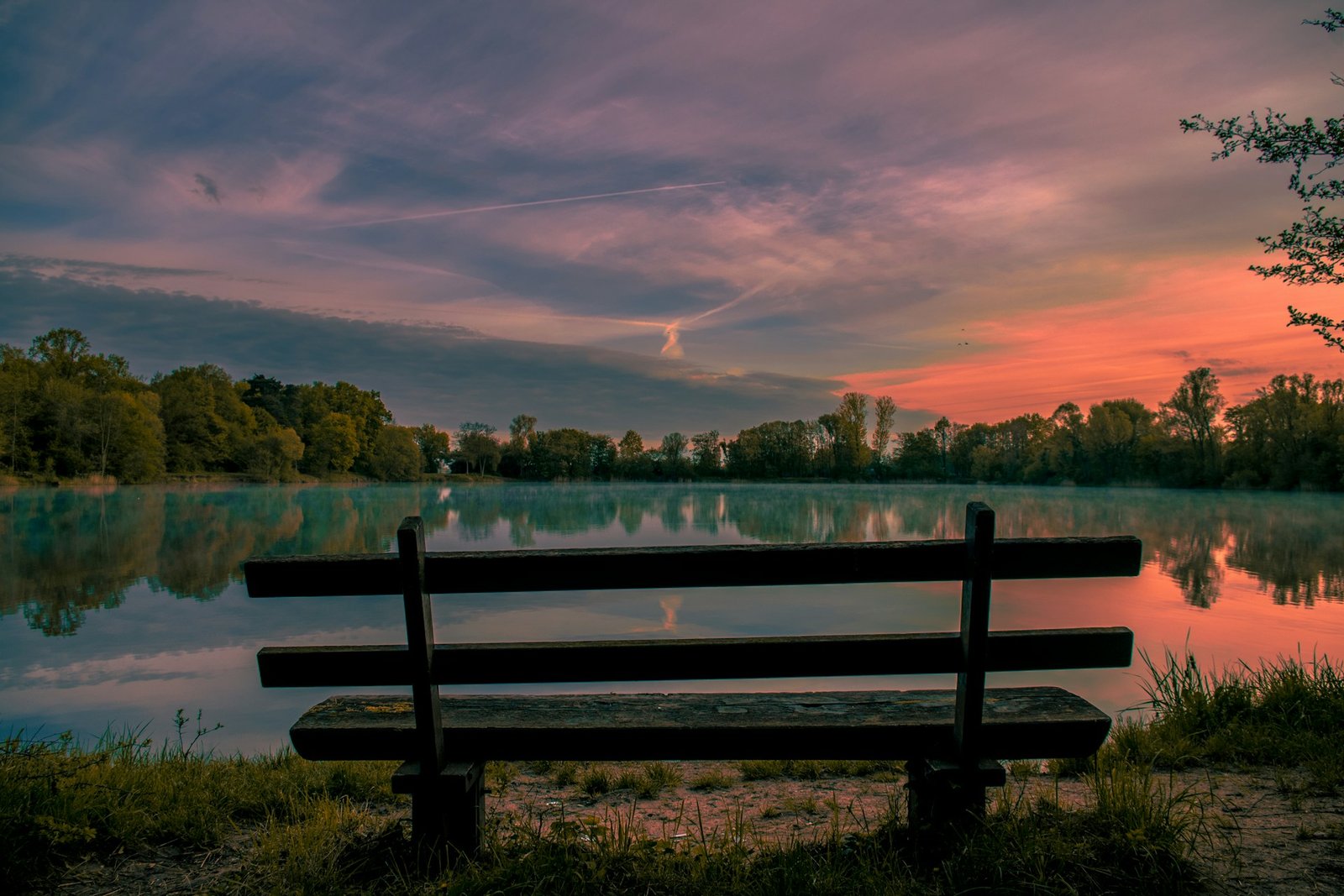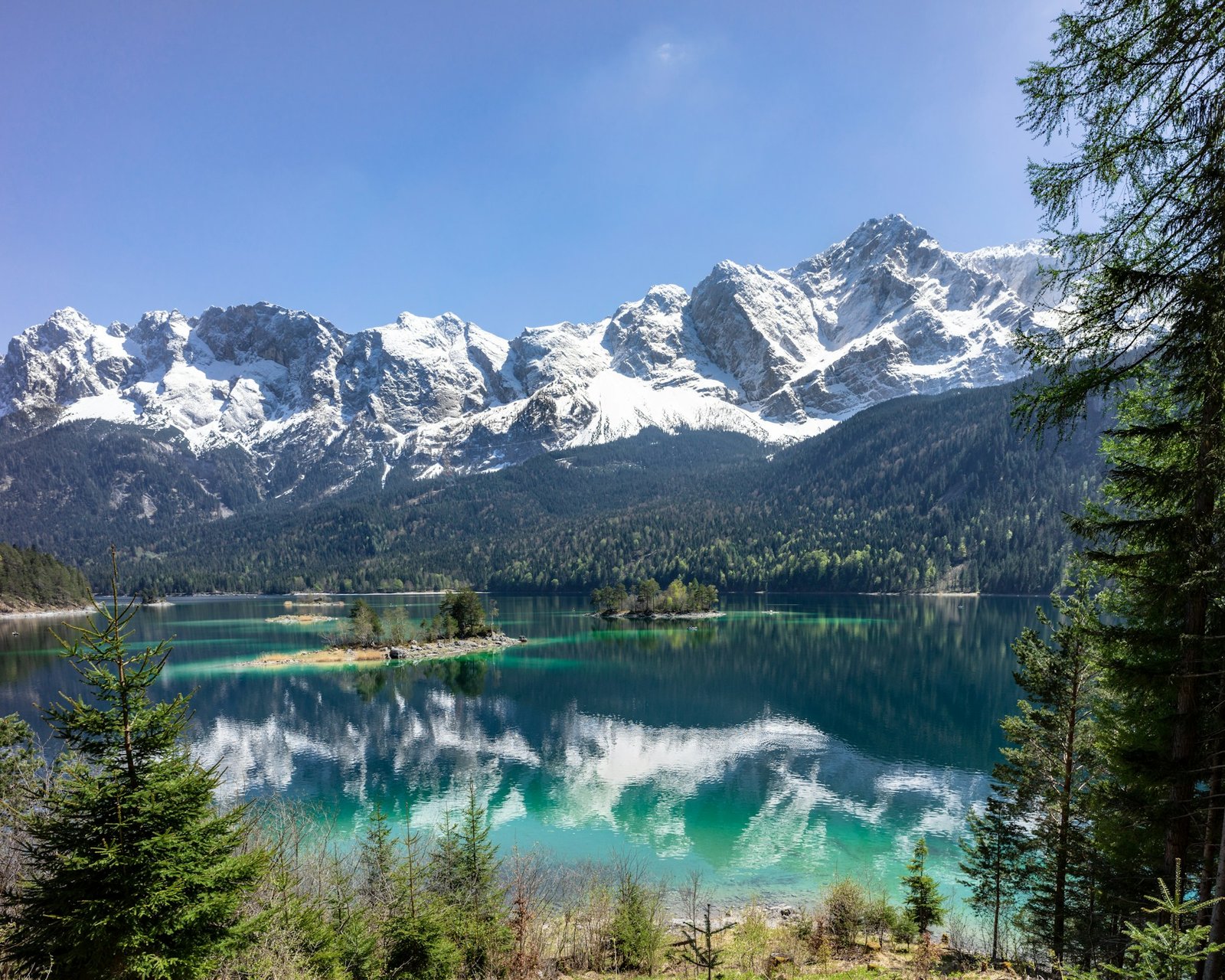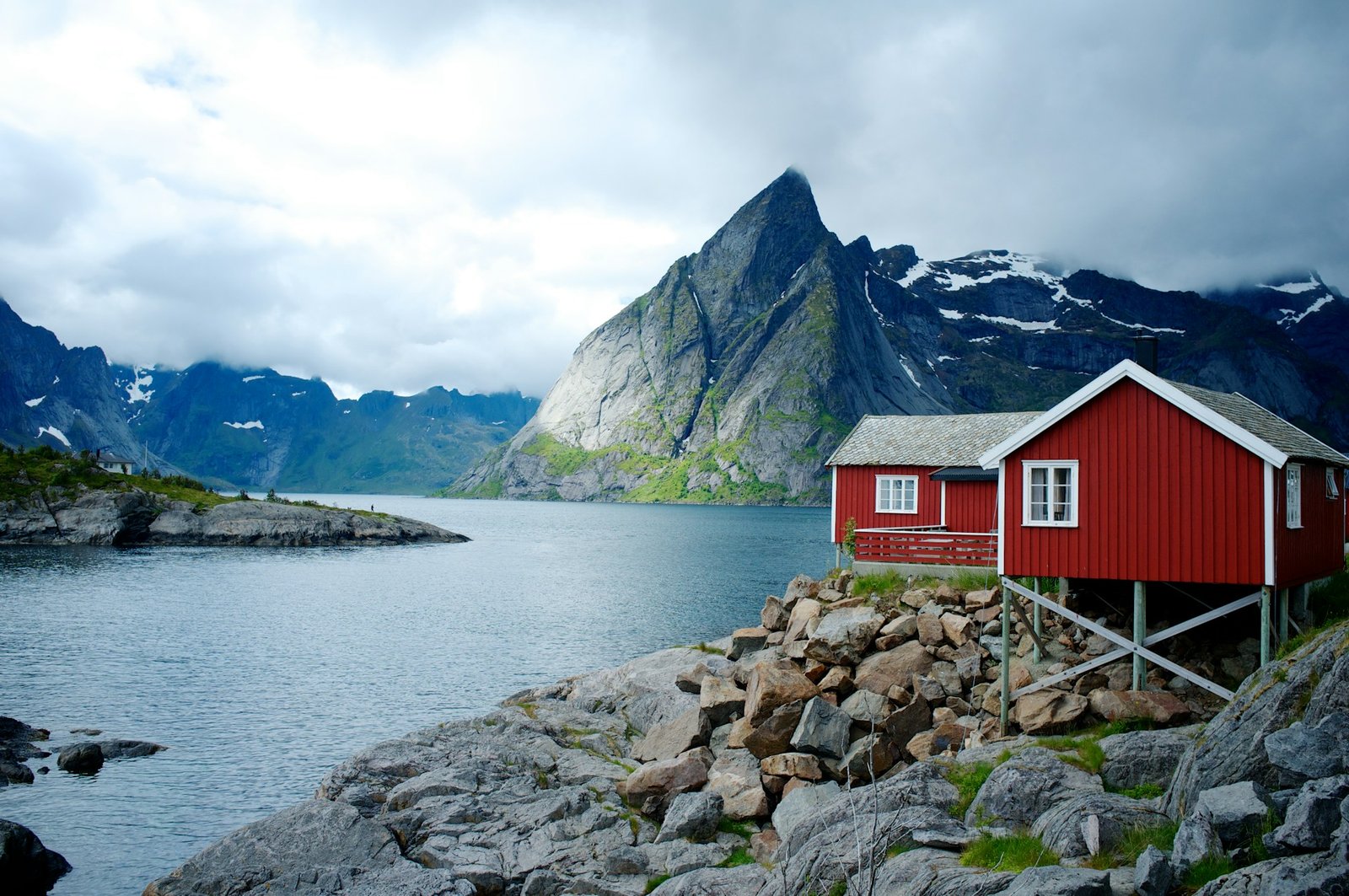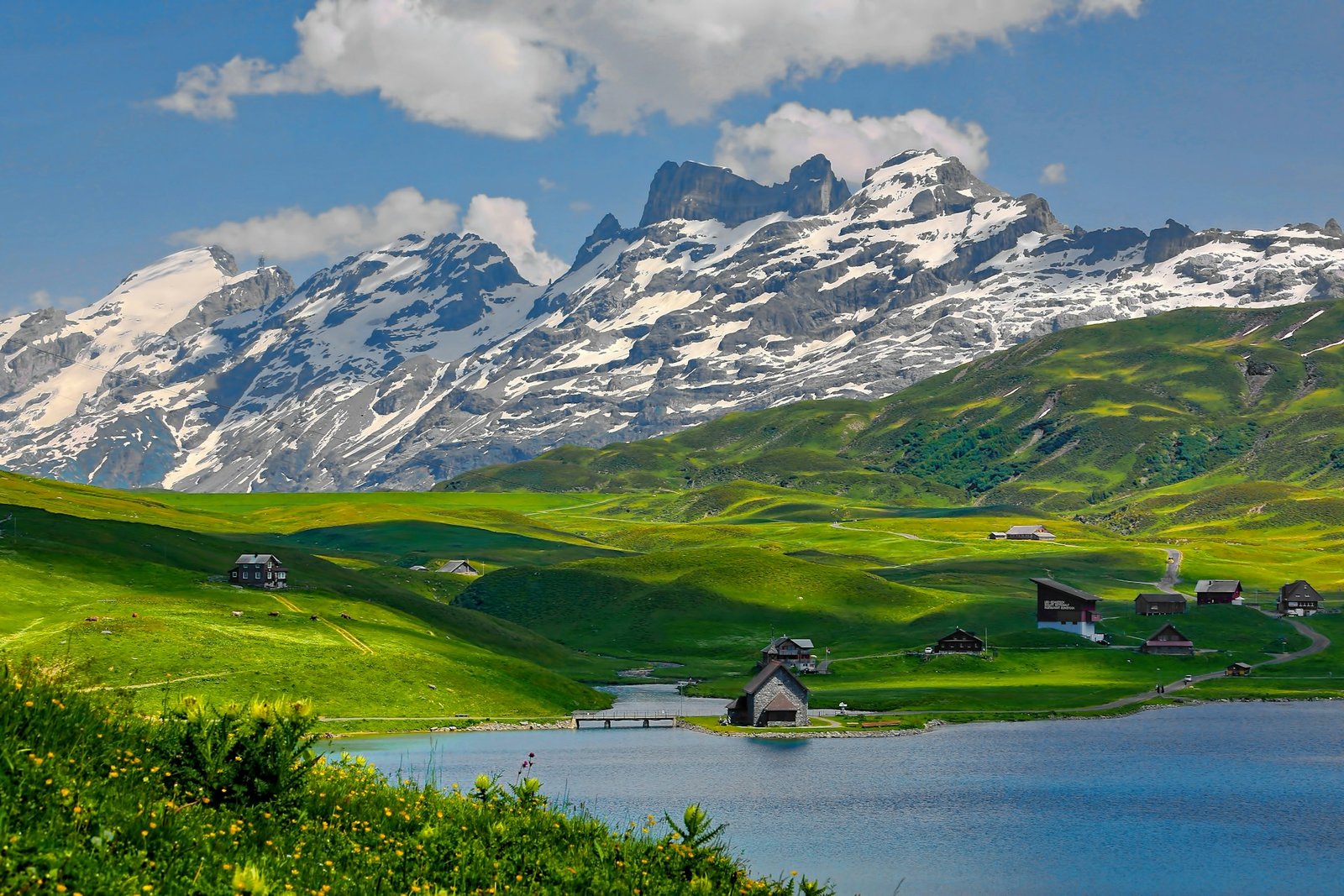Germany is a dream destination, but if you visit in summer, you might not get the experience you hoped for. The best time to visit Germany isn’t when the crowds are at their peak. I’ve seen firsthand how summer turns iconic spots like Neuschwanstein Castle and Berlin’s Brandenburg Gate into packed tourist hotspots. Prices for flights and hotels soar, and let’s not forget the unpredictable heatwaves that can make sightseeing exhausting.
Instead, consider travelling in spring, autumn, or winter. Picture strolling through streets lined with cherry blossoms, enjoying crisp autumn air at a wine festival, or sipping mulled wine at a magical Christmas market. These seasons offer stunning scenery, authentic experiences, and better value for your money.
In this guide, I’ll break down the best times to visit Germany, why skipping summer is a smart move, and how to plan your perfect off-season adventure. Let’s get started!
Best Time to Visit Germany

If you want to experience Germany at its best, avoid the summer crowds and explore during the off-season. Whether you’re after blooming landscapes, cultural festivals, or cosy winter magic, there’s a perfect time to visit. Here’s why Germany in spring, autumn, and winter is far more rewarding than a summer trip.
Spring (March to May): A Season of Colour and Festivities
Blooming Landscapes
Spring transforms Germany into a floral paradise. I’ve walked through Berlin’s Tiergarten and Hamburg’s Alster Park in April—both blanketed in soft pink cherry blossoms. Cities like Bonn become famous for their breathtaking cherry blossom tunnels, making for postcard-perfect strolls. Meanwhile, the countryside bursts with wildflowers, from the Black Forest to Saxony’s rolling hills. If you love photography or peaceful nature walks, Germany in spring is simply magical.
Festivals and Events
Spring isn’t just about flowers—it’s also festival season. One of my favourites is Frühlingsfest in Munich, often called the “little sister” of Oktoberfest. It offers everything Oktoberfest has—lively beer tents, Bavarian music, and delicious local food—but with far fewer crowds. If you love traditional celebrations without the tourist rush, this is your chance to enjoy Bavaria at its best.
Mild Weather for Sightseeing
Spring in Germany brings pleasant temperatures, typically ranging from 10°C to 20°C. That means perfect weather for exploring castles, hiking, or city-hopping without worrying about heatwaves or freezing conditions. Whether you’re cycling along the Rhine or wandering through Heidelberg’s old town, spring makes every outdoor experience comfortable.
Autumn (September to November): Festivals and Foliage
Oktoberfest: The Ultimate German Festival
If there’s one event that defines Germany in autumn, it’s Oktoberfest in Munich. I’ve been there, and trust me—there’s nothing like the energy of the beer halls, the sound of brass bands, and the taste of freshly poured Märzen beer. Even if beer isn’t your thing, the food, fairground rides, and traditional Bavarian outfits make it an unforgettable experience.
Wine Harvest Festivals
For something more relaxed, Germany’s wine regions come alive in autumn. Towns along the Rhine and Moselle rivers host wine harvest festivals, where you can sample local Rieslings, enjoy live music, and soak in the vineyard views. If you prefer a cosy, local atmosphere over Oktoberfest’s energy, these festivals are a fantastic alternative.
Stunning Autumn Foliage
Germany’s landscapes explode in vibrant reds, oranges, and yellows during autumn. I still remember driving through the Bavarian Alps in late October—the scenery looked straight out of a painting. Some of the best places for autumn colours include:
- Saxon Switzerland National Park – Ideal for hiking with breathtaking forest views.
- Black Forest – Famous for its mystical woodlands and scenic trails.
- Neuschwanstein Castle – Even more magical when surrounded by autumn hues.
Winter (December to February): A Fairytale Wonderland
Christmas Markets: Germany at Its Most Magical
There’s a reason why Germany’s Christmas markets are world-famous. Cities like Nuremberg, Dresden, and Cologne transform into winter wonderlands, with twinkling lights, handmade crafts, and the scent of glühwein (mulled wine) in the air. I’ve visited Nuremberg’s Christkindlesmarkt, and sipping warm mulled wine while browsing festive stalls is an experience I’d recommend to anyone.
Winter Sports in the Bavarian Alps
If you love skiing or snowboarding, winter is the best time to visit Germany. The Bavarian Alps offer fantastic slopes for all skill levels, with resorts like Garmisch-Partenkirchen and Berchtesgaden providing breathtaking Alpine views. Even if skiing isn’t your thing, you can enjoy winter hikes, scenic train rides, or spa retreats in cosy mountain lodges.
Cultural Experiences for Cold Days
Germany’s winters can be chilly, but that’s the perfect excuse to explore its world-class museums, opera houses, and historic sites. If you’re in Berlin, the Pergamon Museum and Museum Island are must-visits. In Dresden, don’t miss the Semper Opera House, where you can enjoy a classical concert in a stunning Baroque setting.
So, When Should You Go?
| Season | Why Visit? |
|---|---|
| Spring | Cherry blossoms, mild weather, traditional festivals like Frühlingsfest. |
| Autumn | Oktoberfest, wine festivals, breathtaking autumn landscapes. |
| Winter | Christmas markets, winter sports, cultural indoor experiences. |
If you want fewer crowds, better prices, and a more authentic experience, Germany in spring, autumn, or winter is the way to go. Each season offers something unique—so pick the one that fits your travel style best!
Advantages of Visiting Germany Outside Summer

Skipping the summer rush isn’t just about avoiding crowds—it’s also about saving money, enjoying authentic experiences, and unlocking unique seasonal activities that most travellers miss. If you’re looking for the best time to visit Germany without the stress and expense of peak season, here’s why travelling in spring, autumn, or winter is a game-changer.
1. Cost Savings: Travel More, Spend Less
One of the biggest perks of travelling outside summer is lower prices on flights, accommodation, and attractions. I’ve booked flights to Germany in both peak and off-peak seasons, and the difference can be huge.
- Flights: Airfare to Germany drops significantly in spring and autumn. A summer ticket from London to Berlin can cost over £200, while the same route in March or November can be as low as £80-£120.
- Hotels: Many hotels, especially boutique and family-run ones, offer discounts of 20-40% outside the busy months. In Munich, a central hotel that costs €150 per night in July may drop to €90 in October.
- Attractions: Some museums, tours, and even castles reduce their prices in off-peak months. Plus, with fewer visitors, you won’t feel rushed when exploring.
If you want to travel smart and stretch your budget, Germany in spring, autumn, or winter is the way to go.
2. Authentic Experiences: See the Real Germany
Summer brings waves of tourists, making it hard to truly connect with Germany’s culture. Travelling outside peak months allows you to experience the country like a local.
- Less crowded cities: Walking through Berlin’s Museum Island or exploring Neuschwanstein Castle in summer feels like a battle. But in autumn or winter, you’ll have room to breathe, take better photos, and actually enjoy the experience.
- Easier interactions with locals: Germans are welcoming, but during summer, many are busy catering to tourists. In off-peak months, you’ll have more meaningful conversations in cafés, markets, and family-run shops.
- Better service: Whether at a restaurant, hotel, or guided tour, staff can give you more attention when they’re not overwhelmed with summer crowds.
I’ve visited Germany in both peak and off-peak seasons, and the difference is night and day. If you want a genuine feel of German culture, avoid the tourist rush.
3. Unique Seasonal Activities: A Different Side of Germany
Travelling outside summer means experiencing Germany in ways that most tourists never do. Each season has something special to offer.
Spring: Blossoms and Beer Gardens
- Wander through Bonn’s cherry blossom streets—a must-see in April.
- Enjoy Frühlingsfest (Spring Festival) in Munich—Oktoberfest’s relaxed, less crowded counterpart.
- Hike the Rhine Valley or Saxon Switzerland, surrounded by fresh greenery.
Autumn: Festivals and Foliage
- Experience the world-famous Oktoberfest without extreme summer heat.
- Discover wine harvest festivals in the Moselle and Rhine regions.
- Take a scenic autumn train ride through Bavaria or the Black Forest.
Winter: Christmas Markets and Snowy Alps
- Explore Germany’s Christmas markets in cities like Nuremberg, Dresden, and Cologne.
- Go skiing or snowboarding in Garmisch-Partenkirchen or Berchtesgaden.
- Ride the Zugspitze Glacier Railway for stunning snow-covered Alpine views.
These seasonal experiences are impossible to enjoy in summer. If you want a unique and unforgettable trip, Germany in spring, autumn, or winter has far more to offer than just warm weather.
Why Off-Peak Travel is the Best Choice
| Reason | Why It Matters |
|---|---|
| Save Money | Lower prices on flights, hotels, and attractions. |
| Smaller Crowds | Easier sightseeing and more genuine interactions. |
| Unique Experiences | Seasonal festivals, stunning landscapes, and cosy winter vibes. |
If you want better value, a more authentic experience, and unforgettable seasonal activities, then summer is not the best time to visit Germany. Instead, plan your trip in spring, autumn, or winter—you won’t regret it!
Tips for Planning Your Off-Season German Adventure

Travelling outside summer means better prices, fewer crowds, and unique experiences, but it also requires smart planning. Weather can change quickly, accommodation options differ, and transport schedules vary by season. Here’s how to make the most of your trip in spring, autumn, or winter.
1. Packing Essentials: Be Ready for Any Season
Germany’s off-season weather can be unpredictable, so packing the right gear is essential.
| Season | Weather | What to Pack |
|---|---|---|
| Germany in spring (March–May) | Mild, occasional rain | Light layers, waterproof jacket, comfortable walking shoes. |
| Germany in autumn (September–November) | Crisp, cool, possible showers | Warm layers, scarf, waterproof boots, gloves (late autumn). |
| Germany in winter (December–February) | Cold, snow in some regions | Insulated coat, thermals, winter boots, gloves, hat, scarf. |
- Spring & autumn: A light but warm jacket is a must. Rain showers are common, so waterproof shoes and an umbrella will come in handy.
- Winter: If you’re exploring Germany in winter, invest in thermal layers and waterproof boots, especially if you’re visiting snowy regions like Bavaria or the Black Forest.
2. Accommodation Recommendations: Stay Smart & Save Money
Since fewer tourists visit during the off-season, you can find incredible deals on charming hotels and guesthouses.
- Boutique Hotels & Guesthouses: Many family-run accommodations offer discounts outside peak season. I once stayed in a cosy Bavarian guesthouse in November for 30% less than its summer price.
- Castle Stays: Ever wanted to stay in a real German castle? In autumn or winter, many historic hotels—like Schloss Elmau in Bavaria—offer discounted rates.
- City Apartments: If you prefer flexibility, short-term rentals in cities like Berlin and Hamburg can be cheaper than hotels, especially in winter.
💡 Tip: Always book directly through hotel websites instead of third-party sites for better rates and perks (like free breakfast).
3. Transportation Tips: Get Around Easily & Affordably
Germany’s transport system is efficient and reliable, but the best way to travel depends on the season.
Best Ways to Travel in Each Season
| Season | Transport Tip |
|---|---|
| Germany in spring & autumn | Use Germany’s Deutsche Bahn trains—scenic routes through wine regions and forests look stunning in these seasons. |
| Germany in winter | Opt for long-distance trains over buses—winter roads can be icy, but trains run smoothly. |
| All seasons | Consider the Deutschland-Ticket (€49/month) for unlimited regional train travel. |
- Train Travel: Germany’s Deutsche Bahn network is fast, comfortable, and scenic. I always take the train in autumn to enjoy Bavaria’s golden forests and vineyards along the Rhine.
- Public Transport: Major cities have excellent metro and tram networks. In Berlin, the U-Bahn and S-Bahn are the easiest way to get around.
- Car Rental: If you’re visiting rural areas (e.g., Black Forest, Bavarian Alps), renting a car gives you more freedom. Just be prepared for winter driving conditions if visiting in colder months.
FAQs: Best Time to Visit Germany
What is the best time to visit Germany for good weather?
The best time to visit Germany for pleasant weather is spring (March–May) and autumn (September–November). These seasons offer mild temperatures (10–20°C), fewer tourists, and beautiful landscapes—spring has cherry blossoms, while autumn has golden forests. Summer can be too hot (sometimes over 30°C) and crowded.
Is it cheaper to visit Germany outside summer?
Yes! Travelling in spring, autumn, or winter means lower flight prices, discounted hotels, and cheaper attractions. Many boutique hotels and guesthouses offer off-season deals, and flights can be 30–50% cheaper compared to peak summer months. Winter, except for Christmas market season, tends to have the best travel deals.
What are the best festivals outside summer?
Germany has amazing festivals year-round. Oktoberfest (September–October) is world-famous for beer lovers. Spring brings Frühlingsfest (April–May), a mini-Oktoberfest in Munich. Autumn has wine festivals in the Rhine Valley, and winter is magical with Christmas markets in cities like Nuremberg, Dresden, and Cologne.
What’s the best way to travel around Germany in off-season?
The Deutsche Bahn train system is the best way to get around. Scenic train routes in spring and autumn offer stunning views of vineyards and forests. Winter travellers should use high-speed ICE trains to avoid icy roads. If visiting rural areas, renting a car is ideal, but be prepared for winter driving conditions in the Alps.
Are Germany’s Christmas markets worth visiting?
Absolutely! Germany’s Christmas markets (late November–December) are among the best in the world. Cities like Nuremberg, Dresden, Cologne, and Munich transform into festive wonderlands with twinkling lights, mulled wine (Glühwein), gingerbread, and handcrafted gifts. However, book accommodation early, as this is a popular travel period.
Is Germany still fun to visit in winter?
Yes! Germany in winter is perfect for Christmas markets, skiing in the Bavarian Alps, and scenic winter train journeys. Cities like Berlin and Munich have plenty of indoor attractions (museums, concerts, and cosy cafés). If you enjoy snowy landscapes and festive vibes, winter is a fantastic time to visit.
What should I pack for Germany in spring, autumn, or winter?
Germany’s weather varies, so packing smart is key:
Spring & Autumn: Light layers, waterproof jacket, comfortable shoes.
Winter: Insulated coat, thermals, waterproof boots, gloves, hat, scarf.
Year-Round: A power adapter (Germany uses Type F plugs) and a travel pass for public transport.
Conclusion: Why Off-Season Travel is the Best Time to Visit Germany
If you want cheaper travel, fewer crowds, and unique experiences, Germany in spring, autumn, or winter is the way to go.
- Spring brings blooming landscapes and festivals without summer’s heat.
- Autumn is perfect for Oktoberfest, wine festivals, and stunning foliage.
- Winter offers magical Christmas markets, snow-covered castles, and Alpine adventures.
By travelling off-season, you save money, avoid crowds, and experience Germany at its most authentic. Whether you’re wandering through cherry blossom-lined streets, sipping warm Glühwein in a Christmas market, or hiking through autumn forests, you’ll see Germany in a way most tourists never do.
So, if you’re planning your next trip, skip summer—do this instead!






